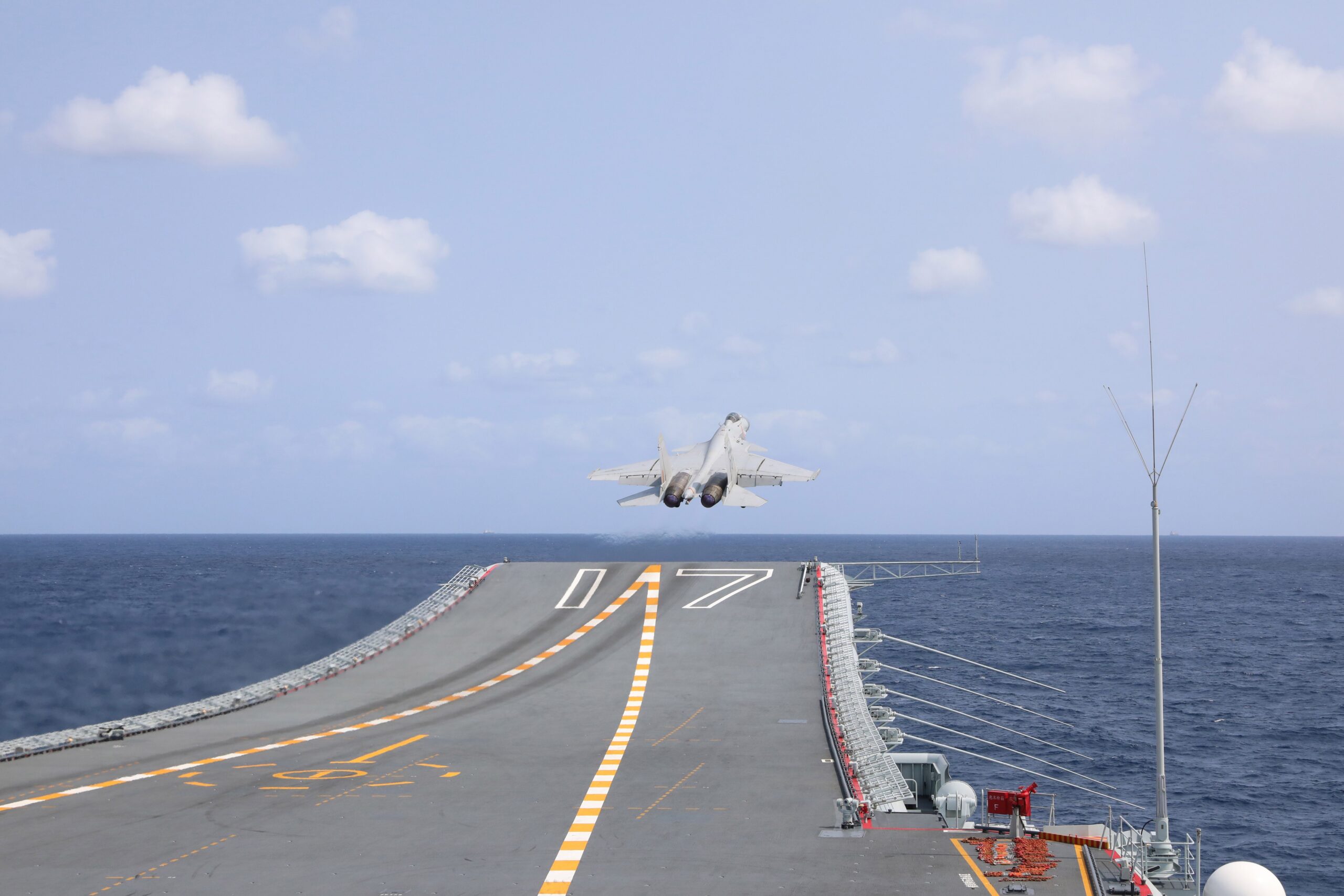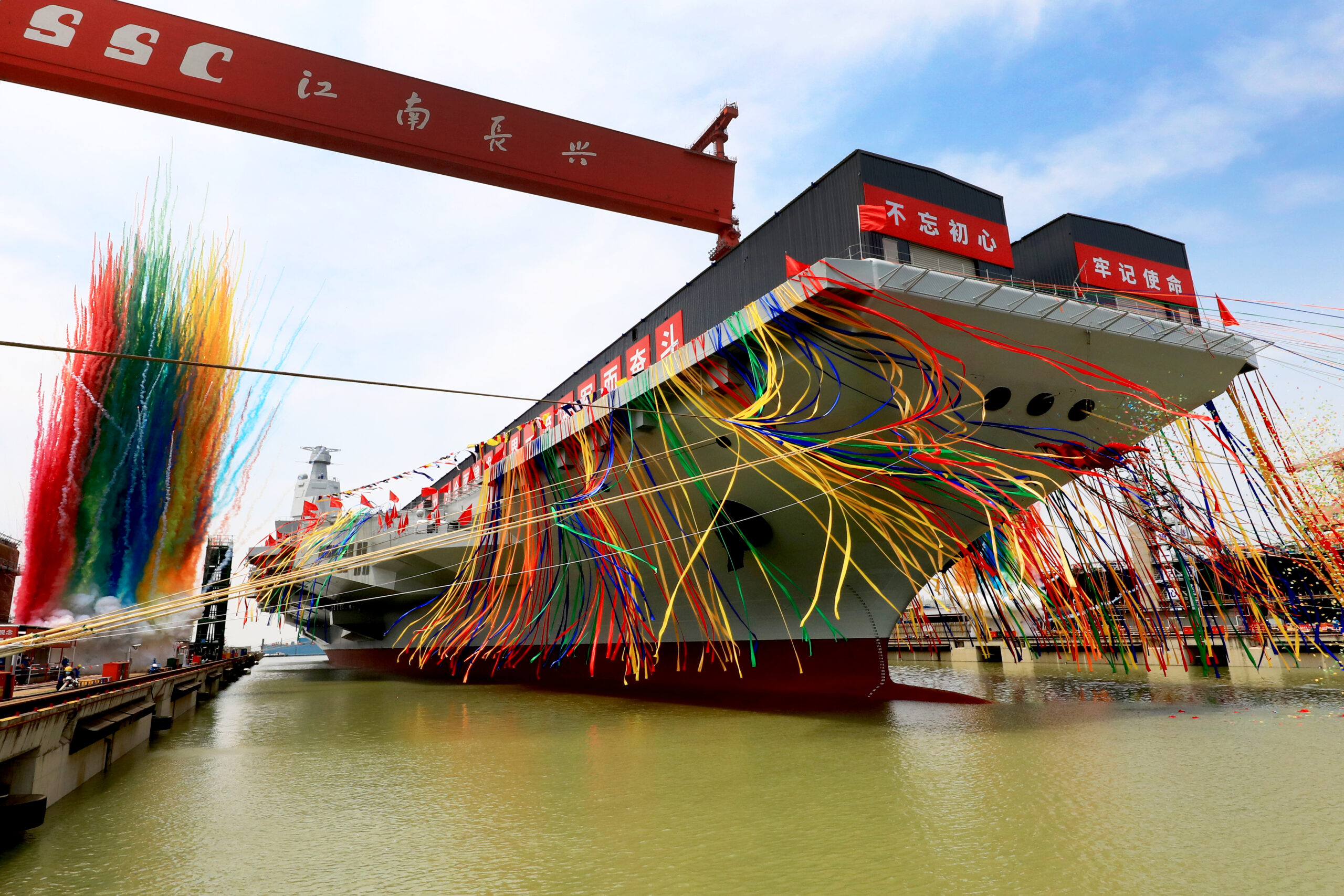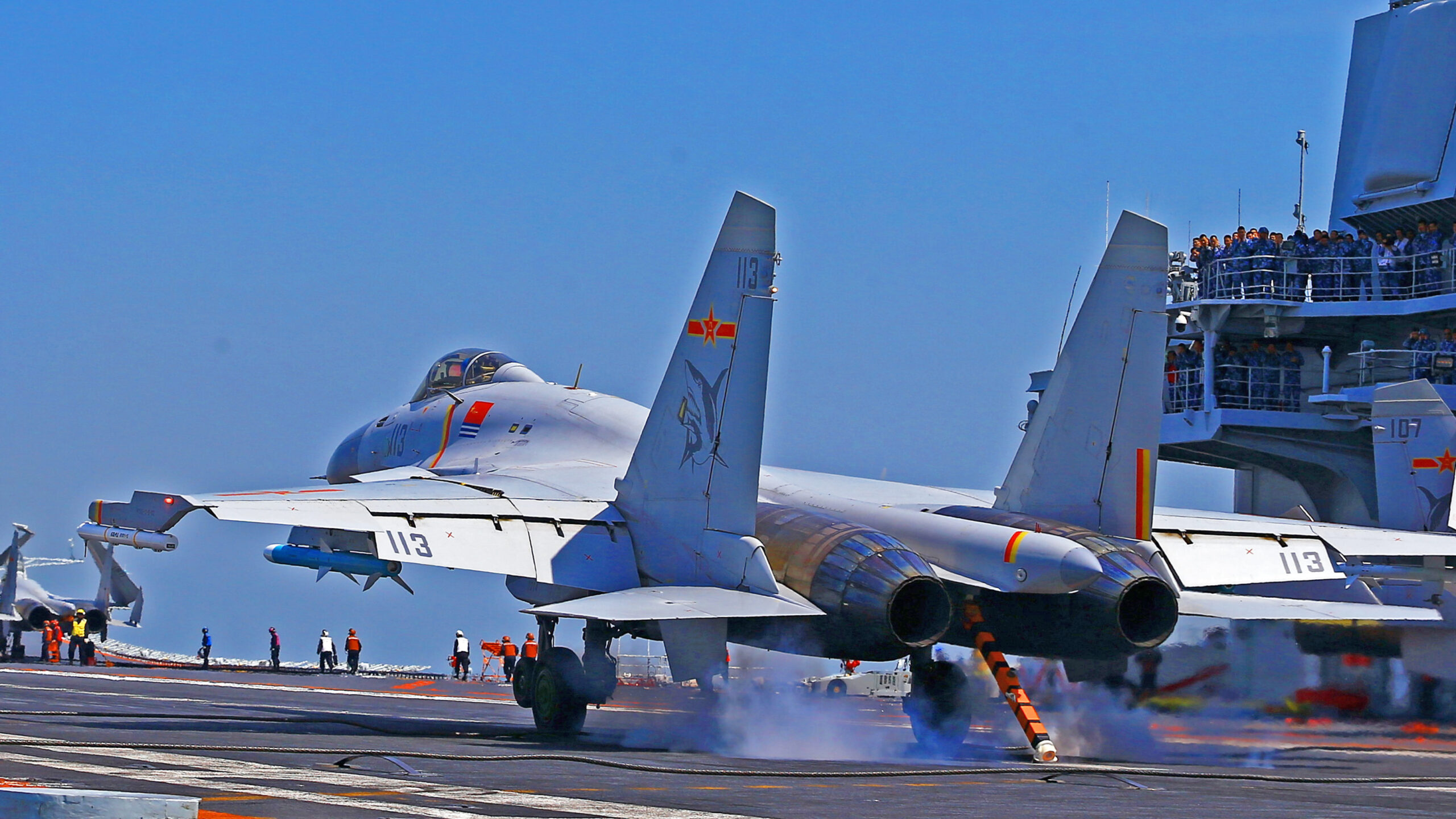A series of photos have appeared that suggest that a mockup of China’s stealthy J-35 carrier-capable fighter has been used for tests aboard the aircraft carrier Liaoning. As well as indicating further progress in the J-35’s path to a career as a frontline naval fighter, it also raises the possibility of a version of the jet operating from China’s two in-service carriers, which are not equipped with catapult launch gear, instead having ‘ski jump’ ramps. Previously, it had been expected that the J-35 was tailored to serve aboard newer types of carriers, of the kind fitted with catapults as well as arrestor gear.

At this point, it’s worth noting that we cannot determine with 100 percent accuracy that the photos are entirely genuine and have not been amended in any way. It would not be the first time that photos of Chinese military equipment have been doctored before publication, although there is no specific reason to doubt their authenticity on this occasion. They look legitimate and multiple angles have been circulating.
The photos, which began to appear on social media today, show the apparent mockup of the J-35 parked at the end of the deck of the Liaoning (CV-16), while the carrier is in port, seemingly as part of a scheduled overhaul. The photos are of varying quality, in no small part due to some of them having been taken from a considerable distance. However, they provide enough detail to determine that this is almost certainly a full-size J-35 mockup, of the kind used for carrier-compatibility tests. There remains a slight possibility that this is a real aircraft. However, although the U.S. Navy will crane real aircraft onto carriers for deck-handling trials, China has shown a preference for using mockups, for this and a variety of other test duties.


A full-size mockup of the J-35 has been seen in the past, too, notably aboard China’s land-based carrier test facility that’s located in Wuhan, China. Here, realistic aircraft ‘shapes’ are evaluated for potential use at sea. The J-35 now seems to have passed to the next phase of testing, namely going aboard a real carrier, albeit still in mockup form.
The Type 001 aircraft carrier Liaoning (CV-16) is the People’s Liberation Army Navy’s first. It was acquired from Ukraine as an incomplete Soviet Kuznetsov class ship, the Varyag.

The next PLAN carrier to enter service, the Type 002 Shandong (CV-17), was built in China but modeled closely on the Type 001.
Both the Liaoning and the Shandong are equipped for short takeoff but arrested recovery, or STOBAR, operations. This involves launching fixed-wing aircraft with the aid of the ski-jump ramp on the bow and then recovering them using arrester wires.

In terms of fighters, the Liaoning and the Shandong have so far exclusively operated J-15s, Chinese-made versions of the Russian Su-33 Flanker carrier fighter that have added successive local improvements, including in terms of engines, avionics, and weapons.
The PLAN’s next aircraft carrier, the Type 003 Fujian (CV-18), takes a very different approach. It has no bow ramp and instead marks the PLAN’s switch to catapult-assisted takeoff but arrested recovery, or CATOBAR, operations. While recovery is the same, CATOBAR carriers employ catapults to launch fixed-wing aircraft, allowing them to take off with much heavier fuel and weapons loads. In the case of the Fujian, the catapult is of the advanced electromagnetic aircraft launch system (EMALS) type, rather than the traditional steam-powered catapults.

Another advantage of CATOBAR vessels is the ability to operate a wider range of aircraft types, including heavier and slower non-fighter designs like the KJ-600 carrier radar plane now in development. The same can be said for less powerful and/or smaller unmanned aircraft. Until the Fujian enters service, however, CATOBAR carriers are exclusively operated by the United States and France.
The emergence of the J-35 had long been considered to be closely tied to the PLAN’s CATOBAR program, which is expected to yield more carriers beyond the Fujian.

Essentially, analysts and observers had assumed that China would stick with the J-15 to operate from its two STOBAR carriers, gaining valuable experience in aircraft carrier operations, before making the leap to a much more capable class of carriers that would boast similarly advanced air wings — including stealthy J-35s. As an interim solution, China also developed a CATOBAR version of the J-15, with modifications required to operate from its catapult-equipped carriers, although its status is somewhat unclear.
Regardless, the logic of preserving the J-35 for the catapult-equipped Type 003 and beyond now seems to be challenged.
After all, a mockup of a J-35 on the Liaoning certainly suggests that the PLAN is at least looking at the possibility of using the stealth fighter not only on the Type 003 carrier and whatever comes after it, but also on the Types 001 and 002.

Of course, the downside of STOBAR operations — whatever the aircraft involved — is that the payloads are significantly decreased. A J-15 launching from a carrier via the ski jump can carry a reduced load of fuel, weapons, and other stores compared to one that takes off with catapult assistance. As a result, the twin-engine J-15 has to sacrifice weapons and fuel to be light enough to get off the deck safely.
Providing the J-35 has enough power to take off from a carrier without a catapult, then it would also be at a massive disadvantage compared with the same aircraft flying from the Fujian.
However, to preserve its low-observable qualities, the J-35 needs to carry any ordnance internally anyway, reducing the likelihood of it carrying external stores and thereby helping trim its payload.
And, if the Liaoning and the Shandong are to be retained in service for a substantial amount of time, fielding a STOBAR successor to the J-15 could be a welcome move. This would be especially beneficial if there were any significant delays to the Fujian, in which case the stealth jets could work aboard the earlier two carriers as a risk-reduction move.

As well as reports of several J-15 losses, there have also been concerns in the past about the safety of the fighter, which The War Zone addressed here. In particular, there were reported complaints about the J-15’s “unstable flight control system.”
Meanwhile, the baseline J-35 has been refined for naval operations, including a heavily revised F-35B-style canopy and cockpit arrangement with no rearward visibility, strengthened landing gear, and a catapult launch bar. As can be seen on the mockup, folding outer-wing panels are provided to reduce the ‘footprint’ when parked or moving around the deck. The aircraft is assumed to be fitted with an advanced active electronically scanned array (AESA) radar that will be harnessed to get the best performance out of a variety of Chinese-made air-to-air and air-to-ground ordnance.

Meanwhile, there have long been rumors about a possible tandem-two-seat version of the naval J-35 that could be used for both training as well as combat missions, including electronic warfare.
Whichever carriers the J-35 ultimately embarks upon, it will mark a significant advance, at least in technological regards, over the J-15.
There’s little doubt that this highly ambitious program is among the most fascinating being run by China’s prodigious military aerospace industry right now.
Contact the author: thomas@thewarzone.com
